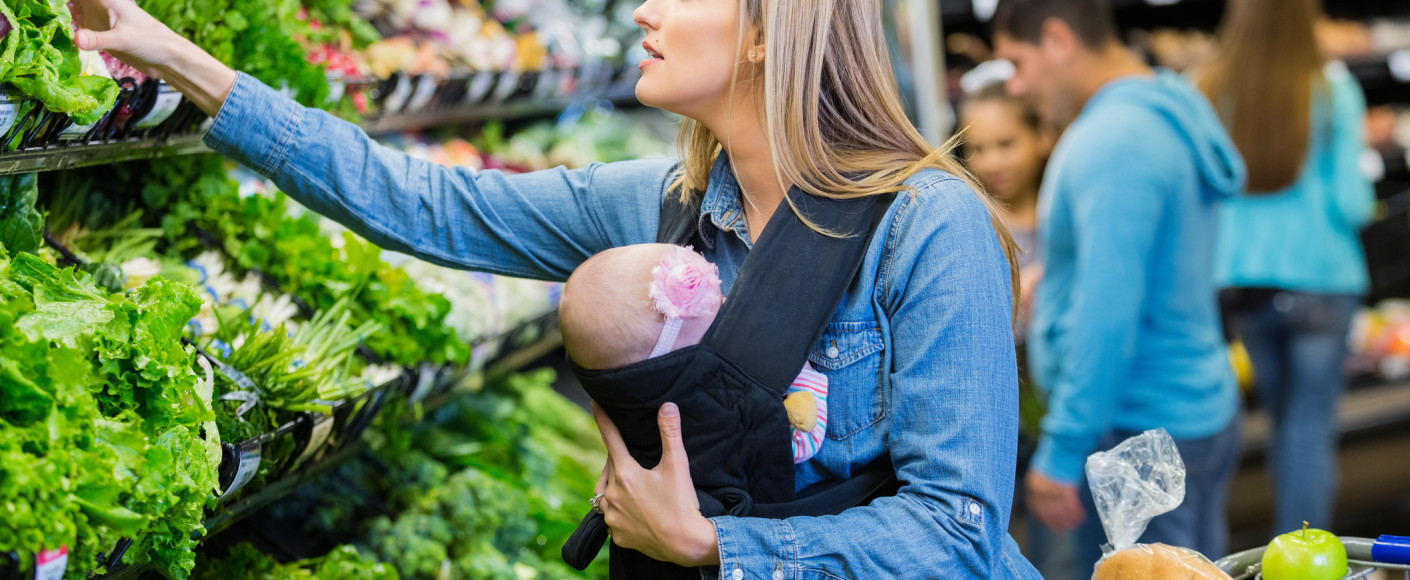Pesticides in Produce
“To buy or not to buy?” That is the question.
From time to time, you probably read stories about fresh produce and pesticides. The Environmental Working Group (EWG) recently released its annual Dirty Dozen—a ranking of produce with the highest levels of pesticide residue. Lots of media outlets pick up the story each year, publishing articles about the fruits and vegetables on the EWG list.
It can be overwhelming—even downright scary—to figure out what’s safe for your family to eat. Because we all know that, for good health, we’re supposed to eat as many fruits and vegetables as we possibly can, right? But what about the list? Are these foods OK…or not?
Let’s take a closer look at what you need to know.
Don’t Worry, Eat Healthy
The good news: fruits and vegetables are a healthy, safe choice. It’s easy to feel nervous when you hear “pesticides” and “dirty” used to describe foods that you think are healthy. But science says you don’t actually have much to worry about.
A study published in the Journal of Toxicology in 2011 looked into the EWG’s evaluation of pesticide exposure. It found that the levels of pesticide detected, as well as the risk of exposure, were “negligible.”
What does that mean?
The Environmental Protection Agency (EPA) has developed what are called “chronic reference doses” for substances like pesticides. Chronic reference doses are the levels of substances that people can be exposed to on a daily basis without an “appreciable risk of harm.”
The study found that the detected pesticide levels were at tiny fractions of those chronic reference dose amounts—about 75 percent of produce tested was one ten-thousandth (1/10,000) of the chronic reference dose. Or, one ten-thousandth of the dose that could cause you an “appreciable risk of harm.”
Suddenly, the numbers don’t seem so scary. But wait…who’s doing the measuring and gathering the numbers, anyway?
USDA Sampling and Testing
The U.S. Department of Agriculture (USDA) manages a Pesticide Data Program that monitors pesticide residue on food. Together with the EPA, the program is designed to ensure our food is safe to eat and free from harmful levels of pesticides.
Using information from the chronic reference doses, the EPA has set pesticide thresholds, called “tolerances,” for foods. (The chronic reference dose looks at risk for human health from the pesticide, while the tolerances establish regulatory dosing levels for farmers who are applying the pesticide.) Basically, these tolerance limits ensure that pesticides are applied to crops properly for human health as well as environmental safety.
Each year, 99 percent of the produce sampled in the program falls below EPA tolerances. What does this mean for you in the grocery store? According to the USDA, it means “consumers can feel confident about eating a diet that is rich in fresh fruits and vegetables.”
So, remember the EWG and their “Dirty Dozen” list? Where do they fall in all of this?
EWG’s “Dirty Dozen” List
The EWG is an environmental advocacy organization that analyzes the annual USDA data on pesticide residue found on common fruits and vegetables. Then they rank the fruits and vegetables with the highest and lowest amounts of residue in two lists—the Dirty Dozen and the Clean 15.
These lists are just that—a ranking. They don’t indicate whether the actual residue levels are above EPA thresholds, just that they had more or less than the other produce.
The EWG encourages consumers to buy organic, especially for produce on the Dirty Dozen list, but acknowledges that’s not always possible. (Plus, just to complicate things further, third-party studies have shown that organic does not mean pesticide-free.)
Although the lists can help shoppers prioritize which produce to buy organic as the EWG suggests, the group points out that, “The health benefits of a diet rich in fruits and vegetables outweigh the risks of pesticide exposure. Eating conventionally grown produce is far better than skipping fruits and vegetables.”
So, should you pass on eating food on the Dirty Dozen list such as strawberries (#1), spinach (#2), kale (#3) or nectarines (#4)? Nope.
Remember, since 99 percent of produce tested falls below EPA thresholds, we can feel good about our produce. Bottom line: Organic or not, if you focus on the science, not the scare tactics, you can eat plenty of produce, worry-free.




